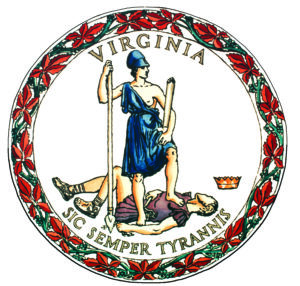As you descend into the quiet ravine, sheltered by tall trees and a soft leafy floor, let your thoughts travel far, far back in time. This small peninsula jutting out into the Potomac River is part of a huge watershed that supports a lush landscape, fresh water, abundant animals, and as a result, people. It has seldom been empty of human inhabitants.
More than 11,000 years ago hunter-gatherer groups criss-crossed the modest hills, leaving behind spent arrows and stone knives. They eventually formed permanent settlements in the region 2,750 years ago. By the time Europeans arrived, the area was dominated by a tribe that called itself the “Moyumpse” or “Meompses.” Rival tribes disrespectfully labeled them the “Doeg” people. The name stuck among the invaders, since it was adopted by explorers, such as the 17th-century Captain John Smith. Europeans’ records used several alternate spellings, including “Dogue” and “Dog.”
The local people fished in the river and streams and farmed the mineral-rich hills, cultivating beans, corn, and squash. They, like members of other neighboring tribes, also, raised tobacco to use for pleasure and ritual purposes.
The Moyumpse were used to navigating complicated political situations. Once a part of Powhatan’s confederacy to the south, by the early 1600s they were more closely aligned with the Iroquois further north. Alliances provided protection during times of conflict and trading partners in peace.
Power structures started to change once Europeans settled in the area. As colonial land use intensified along the tidewater, the Moyumpse and English peoples competed over limited resources. The infusion of new people and attitudes strained existing tribal relationships. Violence broke out as alliances formed and dissolved among the Moyumpse, Piscataway, Pamunkey, and Rappahanock peoples who lived in the region, Seneca and Iroquois people who traveled through on regular hunting trips, and English settlers eager for ever more land.
As these competing Indian tribes and European settlers vied for control over the most valuable territory, George Mason’s great-grandfather, grandfather, and father, in turn envisioned a Virginia settled by Englishmen. Over three generations, they actively pushed native peoples out of this area and ever further westward, claiming the lucrative, river- and bay-front property for themselves.
Archaeological remnants of structures near this trail indicate that Europeans started living on this peninsula by the 1690s. Documentary evidence indicates there were violent attacks on both sides for at least fifteen more years. By George Mason’s lifetime, the Moyumpse Indian lands had long since been taken over by white settlers.
With its excellent water access, high ground, and acres of forests, the land that became Gunston Hall remained a productive prize. After their marriage, Ann Eilbeck Mason and George Mason chose to make this place, of all the properties they owned, their home.
What will you learn about next?
Do you need a refresher on where you are on the property? Access the grounds map here.









